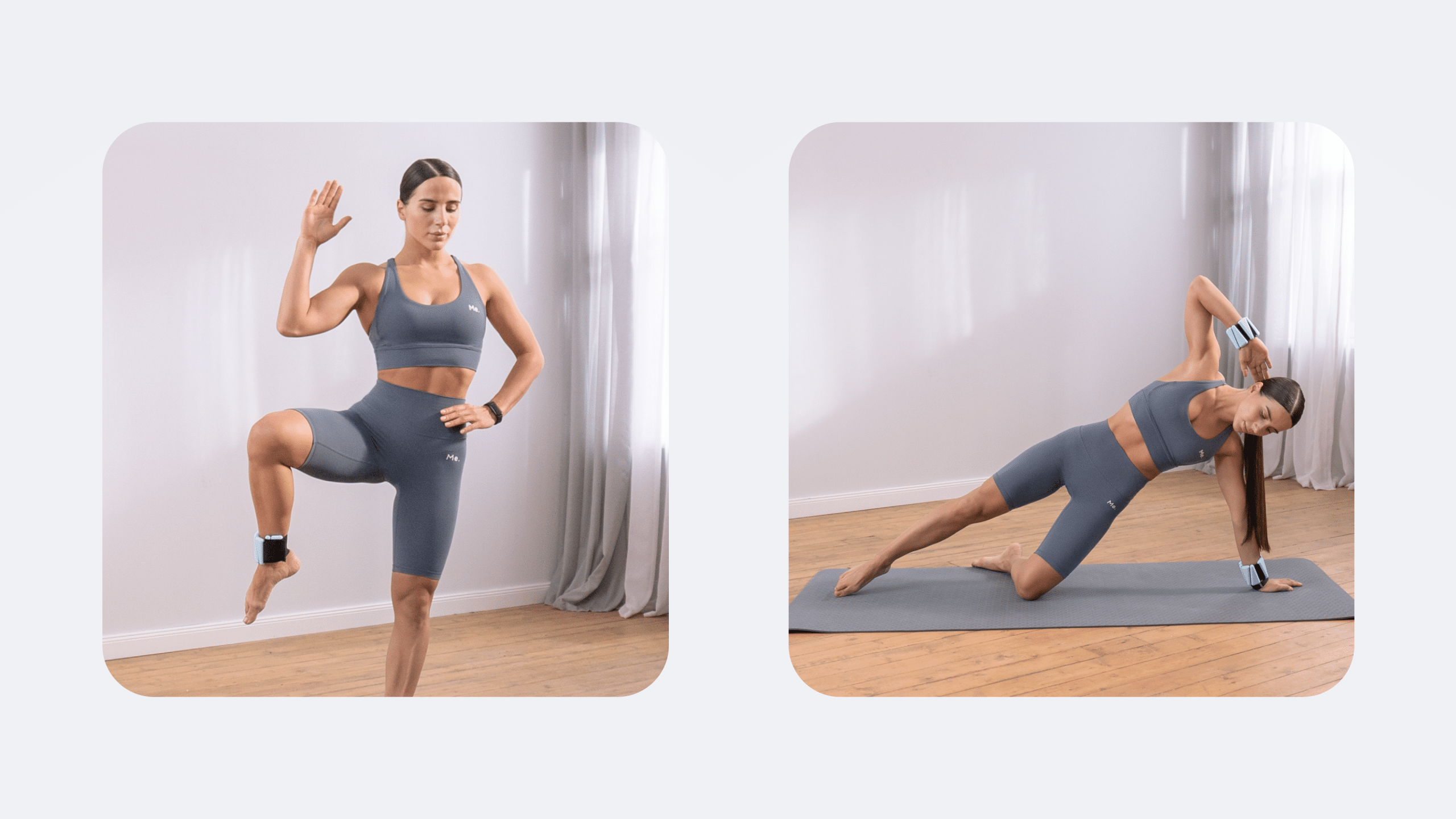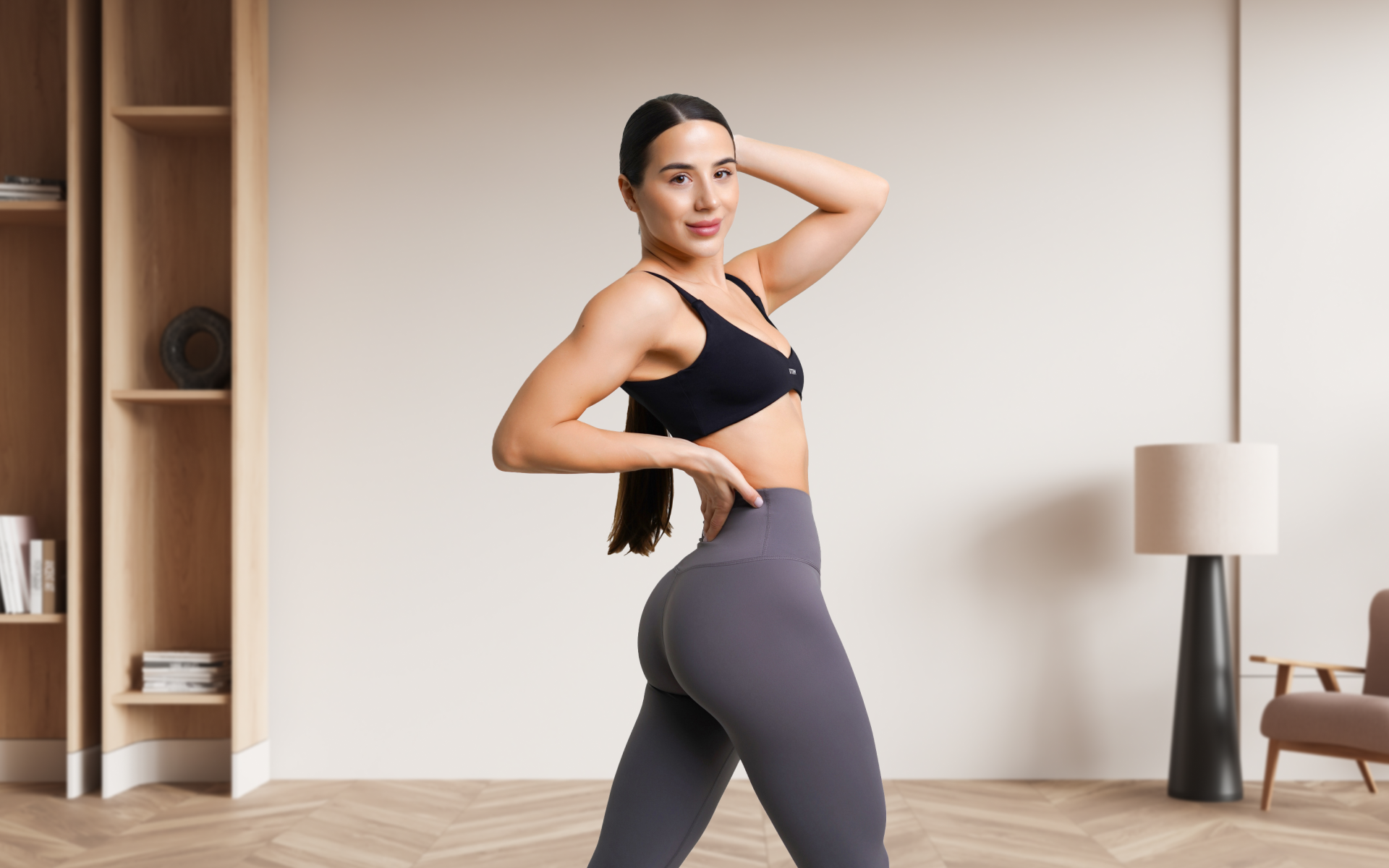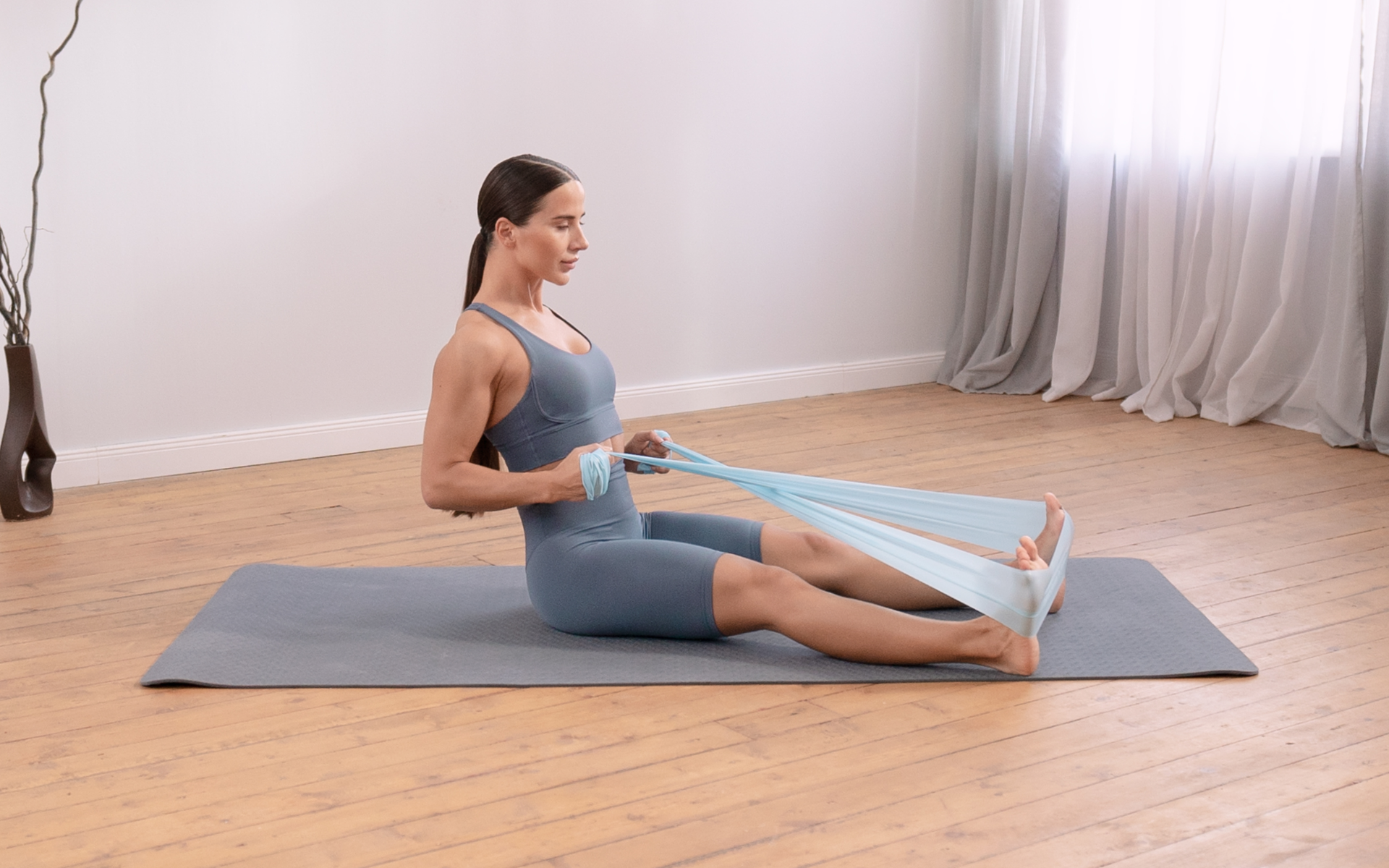So you’ve made the decision to start calisthenics—congratulations! This form of exercise is not only fantastic for enhancing your overall fitness and strength, but also doesn’t require any specialized equipment, which makes it highly accessible.
Calisthenics focuses on using your body weight to perform various movements, allowing you to build muscle and improve flexibility at the same time. It’s a fun and challenging workout that can be done anywhere, whether at home, in a park, or at the gym.
We’ll walk you through all that you need to know as a beginner, including the seven basic moves that will form the foundation of your calisthenics routine.
What Is a Good Calisthenics Routine for a Beginner?
A good calisthenics routine for a beginner starts with the basics and gradually progresses to more challenging exercises. It likely includes a mix of upper body, lower body, and core exercises, as well as stretches to prevent injury and improve flexibility.
As a beginner you might struggle with some of the movements, and that’s okay. It’s important to focus on proper form and gradually increase the number of repetitions and sets as you get stronger.
Here are 7 basic moves that every beginner should learn and master before moving on to more advanced exercises:
1. Knee Push-ups
Knee push-ups are a modified version of traditional push-ups where you support your body on your knees instead of your toes, making it easier to build upper body strength.
Steps:
- Start in a plank position with your knees on the ground.
- Keep your hands shoulder-width apart and directly under your shoulders.
- Engage your core and keep your body straight from your head to your knees.
- Lower your chest towards the ground by bending your elbows.
- Pause for a moment when your chest is just above the ground.
- Push back up to the starting position, fully extending your arms.
- Repeat for a set of 8-12 repetitions.
2. Assisted Pull-ups
If full pull-ups are challenging, use a resistance band or a sturdy chair for support. Loop the band around the pull-up bar and under your feet or knees for assistance as you pull yourself up.
Steps:
- Secure a resistance band to a pull-up bar or use a sturdy chair.
- Grip the pull-up bar with an overhand grip, hands slightly wider than shoulder-width.
- Place one foot in the resistance band or use the chair for support.
- Hang with your arms fully extended and engage your shoulders.
- Pull yourself upward, focusing on using your back and arms to lift.
- Lower yourself back down slowly to the starting position.
- Perform 5-8 repetitions, gradually reducing assistance as you gain strength.
3. Half Squats
Start with half squats, where you lower your body partially instead of going all the way down. This approach helps you focus on proper form and stability before progressing to more depth.
As you get more comfortable and stronger, gradually increase the depth of your squats. This method builds strength in your legs and glutes and is a highly functional movement pattern.
Steps:
- Stand with your feet shoulder-width apart and toes slightly pointed outward.
- Keep your chest up and shoulders back.
- Begin to bend your knees and lower your body down halfway.
- Make sure your knees stay in line with your toes.
- Pause in the halfway position for a moment.
- Push through your heels to return to a standing position.
- Repeat for a set of 10-15 repetitions.
4. Modified Planks
Modified planks, such as knee planks or forearm planks, help strengthen your core while promoting excellent stability. These variations allow you to build strength progressively, making it easier to transition to a full plank as you gain confidence and endurance.
Steps:
- Start on your knees with your hands under your shoulders for knee planks, or on your forearms for forearm planks.
- Engage your core and keep your back straight, forming a straight line from your head to your knees or toes.
- Hold this position for 20-30 seconds, gradually increasing the duration as you become stronger.
- Focus on your breathing; inhale deeply through your nose and exhale through your mouth.
- Keep your neck neutral by looking slightly forward, not down.
- Maintain the position, ensuring your hips don’t sag or rise too high.
- Repeat for 2-3 sets, taking a short rest between each set.
Whether you’re a workout beast or just a beginner making your first foray into the world of fitness and dieting – BetterMe has a lot to offer to both newbies and experts! Install the app and experience the versatility first-hand!
5. Chair Dips
Chair dips are a fantastic way to strengthen your triceps, shoulders, and chest while maintaining a controlled motion. Using a sturdy chair allows you to adjust the angle and intensity of the exercise, making it suitable for beginners.
Steps:
- Sit on the edge of a sturdy chair with your hands beside you, fingers facing forward.
- Move your body forward off the chair and lower yourself by bending your elbows.
- Keep your elbows close to your body, until your arms form a 90-degree angle.
- Push back up to the starting position.
- Aim for 8-12 repetitions for 2-3 sets.
6. Reverse Lunges
Reverse lunges are often easier for beginners compared to traditional lunges as they reduce the risk of losing balance while targeting the legs and glutes. This exercise is an excellent way to strengthen your lower body in a safe and functional manner.
Steps:
- Stand with your feet hip-width apart.
- Step backward with one leg, lowering your hips until both knees are bent at about a 90-degree angle.
- Make sure your front knee stays over your ankle.
- Push through the front heel to return to the starting position.
- Alternate legs for a set of 8-10 repetitions per side.
7. Crunches
Crunches are an abdominal exercise that focuses on the upper abdominal muscles and offers a gentler alternative to full sit-ups. They help reinforce core strength without putting undue strain on the lower back.
Steps:
- Lie on your back with your knees bent and feet flat on the ground.
- Place your hands behind your head or cross them over your chest.
- Engage your core and lift your shoulders off the ground a few inches, keeping the lower back pressed into the floor.
- Hold for a moment before lowering back down.
- Perform 10-15 repetitions for 2-3 sets.
In our previous blog, 10-Minute Calisthenics Workout, we discussed more beginner-friendly calisthenics exercises.
How to Start Calisthenics as A Beginner?
Start slow and gradually progress as you gain strength and confidence. Here are some tips that might help:
Start With Basic Exercises
From the list above, there are plenty of simple yet effective calisthenics exercises that can be done at home without any equipment. Start with these basic exercises and gradually add more challenging variations as you progress.
Read More: Advanced Calisthenics: 7 Exercises for Greater Gains
Focus On Form
Proper form is crucial for performing calisthenics exercises safely and effectively. Mastering the correct technique not only prevents injuries but also maximizes the benefits of each movement (1).
Take your time to learn each exercise’s proper form, focusing on body alignment and control, before attempting to increase reps or difficulty level.
Additionally, practicing the fundamentals will help you build a strong foundation, making it easier to progress to more advanced variations in the future. Remember, quality always trumps quantity when it comes to fitness!
Set Achievable Goals
Start small and set realistic goals for yourself, whether it’s in your fitness journey, career, or personal projects. By breaking down your aspirations into manageable steps, you can create a sense of achievement as you reach each milestone.
This approach not only helps you stay motivated, but it also reduces the risk of burnout or injury. Remember, progress takes time, and celebrating small victories along the way will keep your spirits high and encourage you to keep pushing forward.
Be Consistent
Consistency is key when it comes to seeing results in calisthenics. To truly harness the benefits of this training method, aim to exercise at least 3-4 times a week. This frequency allows your body ample time to adapt and recover, which is essential for building strength and endurance.
As you progress, gradually increase both the frequency of your workouts and the intensity of the exercises you perform.
Listen To Your Body
It’s essential to listen to your body and not push yourself too hard. If an exercise feels too difficult or causes pain, take a break and reassess your form before attempting it again. Remember, there are regressions for every exercise that may be a better option for you!
Stay Hydrated
Calisthenics can be quite intense, engaging multiple muscle groups and pushing your endurance to the limit. To ensure optimal performance and recovery during your workout, it’s crucial to stay hydrated by drinking plenty of water before, during, and after your session.
Keeping a water bottle handy can help you maintain proper hydration levels and enhance your overall workout experience (2).
Rest And Recover
Rest days are just as important as workout days. Give your body time to rest and recover between workouts for optimal results (3).
How Long Should a Beginner Do Calisthenics?
According to the American College of Sports Medicine, beginners should aim for at least 2-3 days a week of strength training exercises, including calisthenics (4). As you progress, aim for 3-4 days a week to challenge your body and improve your overall fitness level.
However, it’s important to listen to your body and not push yourself too hard. Taking rest days and allowing your body time to recover is just as crucial for achieving results with calisthenics. It’s also recommended to gradually increase the duration of each workout as you become stronger and more comfortable with the exercises.
Reasons why BetterMe is a safe bet: a wide range of calorie-blasting workouts, finger-licking recipes, 24/7 support, challenges that’ll keep you on your best game, and that just scratches the surface! Start using our app and watch the magic happen.
Can I Do Calisthenics Everyday as a Beginner?
Experts do not recommend doing calisthenics every day, especially for beginners. The American Council on Exercise suggests that muscles need at least 48 hours to recover after a strength training session. This allows them to repair and rebuild, leading to stronger muscles (5).
Beginners should aim to have at least one day of rest in between calisthenics workouts. As you progress, you can gradually increase the frequency and duration of your training sessions, but it’s essential to always listen to your body and take rest days when needed.
How Many Reps for Beginner Calisthenics?
The number of reps in any workout is highly individual and varies based on several factors. Let’s look at these in detail:
- Fitness Level: As a beginner, your first step should be mastering the basic movements. Typically, it is recommended that beginners do not focus on very high intensity exercises that can only be performed for a low number of reps, but rather find a starting point that will allow a rep range somewhere between 6-15 reps per set. This is a general recommendation that certainly has exceptions, but it typically provides a suitable neuromuscular benefit for beginners to learn the coordination involved with their foundational exercises.
- Exercise Difficulty: Remember that some exercises may present more challenges than others, affecting the number of reps you can perform. Stay motivated by focusing on maintaining proper form and progressively increasing your reps over time.
- Your Goal: Once you have a good grasp on the foundational exercises, you can begin incorporating more variation in your repetition ranges based on your primary goals. If your goal is to build strength, aim for lower reps with higher intensity and longer rest intervals (2-5 minutes between sets). For muscle hypertrophy, focus on moderate reps (6-12) with moderate resistance and moderate rest intervals (60-90 seconds between sets). To improve endurance, target higher reps (12-20) with lower resistance and shorter rest intervals (less than 30-60 seconds between sets).
- Rest Periods: The duration of your rest periods between sets or exercises can also affect the number of reps you can perform. At similar levels of workout intensity, shorter rest periods challenge your muscles more, leading to fewer reps. On the other hand, longer rest periods allow for more recovery and potentially higher reps.
Read More: Easy Calisthenics Workout: 9 Must-Have Exercises for Your Routine
How Long Before I See Results from Calisthenics?
Seeing results from calisthenics, like any form of exercise, takes time and consistency. It’s essential to remember that everyone’s body is different, and results will vary based on various factors such as starting fitness level, diet, and genetics.
However, these changes will happen gradually and across a timeline. Here’s what you can expect:
- 4-8 weeks: This is the initial phase where your body will start adapting to the new form of exercise. You may notice an increase in strength and endurance, but visible physical changes may not be apparent yet.
- 3-6 months: With consistent training and proper nutrition, you should start seeing noticeable changes in muscle definition and overall physique.
- 9+ months: As you continue to progress with calisthenics, your muscles will become more defined and you’ll likely have seen noticeable progressions in the difficulty of exercises you can perform. You may also see improvements in balance, coordination, and overall athleticism.
Remember that consistency is key, and visible results can vary greatly from person to person. Don’t get discouraged if you don’t see immediate changes, keep pushing forward, and trust the process.
FAQs
Is Calisthenics Hard for Beginners?
Many beginners may find certain exercises tough at first, but with practice, you’ll build strength and confidence. Focus on mastering the basics before moving on to more complex movements. Exercise regressions, like the knee push-up instead of a full push-up, can also help beginners ease into calisthenics.
How Can I Incorporate Calisthenics into My Workout Routine?
There are several ways to incorporate calisthenics into your workout routine. You can try a dedicated calisthenics workout 2-3 times a week or add in bodyweight exercises as part of your warm-ups and cool-downs on other days. It’s essential to find a balance that works for you and fits your overall fitness goals.
We’ve discussed this in detail in our beginner calisthenics workout no equipment article.
Can You Self-Learn Calisthenics?
Many people successfully learn calisthenics on their own. There are plenty of online resources, videos, and communities dedicated to helping you along the way. Just remember to prioritise safety and proper form to avoid injury as you progress.
Best Calisthenics Routine for a Beginner
A well-rounded calisthenics routine for beginners should include fundamental exercises like push-ups, squats, pull-ups, and planks. Aim for full-body workouts that focus on different muscle groups. Starting with 2-3 sets of 6-12 reps per exercise is a good way to build a solid foundation.
Check out another BetterMe article: The Ultimate Calisthenics Workout With No Equipment.
Is Calisthenics 3 Times a Week Enough?
Calisthenics can be effectively performed three times a week. This frequency allows for sufficient recovery while still providing a consistent training stimulus. As you advance, you can adjust the frequency and intensity based on your goals and recovery needs.
Should I Do 3 or 4 Sets of Calisthenics?
The choice between 3 or 4 sets per exercise depends on your fitness level and goals. Beginners may start with 3 sets, focusing on proper form and technique. As you progress and feel more comfortable, you can increase to 4 sets to further challenge your muscles and enhance endurance.
There’s also no reason you can’t do more or less than 3-4 sets for an exercise, depending on your goals. For instance, certain high intensity interval training (HIIT) workouts will utilize multiple variations of different exercises, but only perform each exercise 1-2 times during the workout. On the other hand, a person looking to focus on a complex exercise advancement may choose to perform 5 or more sets of that exercise in a single workout to ensure proper volume and neuromuscular adaptations for the new skill.
Conclusion
Calisthenics can help beginners to build strength, improve flexibility, and enhance overall fitness without the need for extensive equipment. By starting with fundamental movements and adhering to a routine that includes appropriate rest and recovery, you set yourself on a sustainable path to achieving your fitness goals.
Remember that consistency, patience, and proper form are vital components of your journey. As you progress, feel free to challenge yourself with more advanced exercises and variations. Embrace the process, celebrate your achievements, and enjoy the many benefits that calisthenics has to offer!
DISCLAIMER:
This article is intended for general informational purposes only and does not serve to address individual circumstances. It is not a substitute for professional advice or help and should not be relied on for making any kind of decision-making. Any action taken as a direct or indirect result of the information in this article is entirely at your own risk and is your sole responsibility.
BetterMe, its content staff, and its medical advisors accept no responsibility for inaccuracies, errors, misstatements, inconsistencies, or omissions and specifically disclaim any liability, loss or risk, personal, professional or otherwise, which may be incurred as a consequence, directly or indirectly, of the use and/or application of any content.
You should always seek the advice of your physician or other qualified health provider with any questions you may have regarding a medical condition or your specific situation. Never disregard professional medical advice or delay seeking it because of BetterMe content. If you suspect or think you may have a medical emergency, call your doctor.
SOURCES:
- Prevent Injuries with Proper Form During Workouts (2021,nus.edu.sg)
- Physical Activity & Water – A Healthy Combination (2015,moh.gov.jm)
- How often should you take a rest day? (2023,uclahealth.org)
- Resistance Training for Health and Fitness (2013,prescriptiontogetactive.com)
- Time to Reconsider Muscle Confusion (2017,ace.org)












